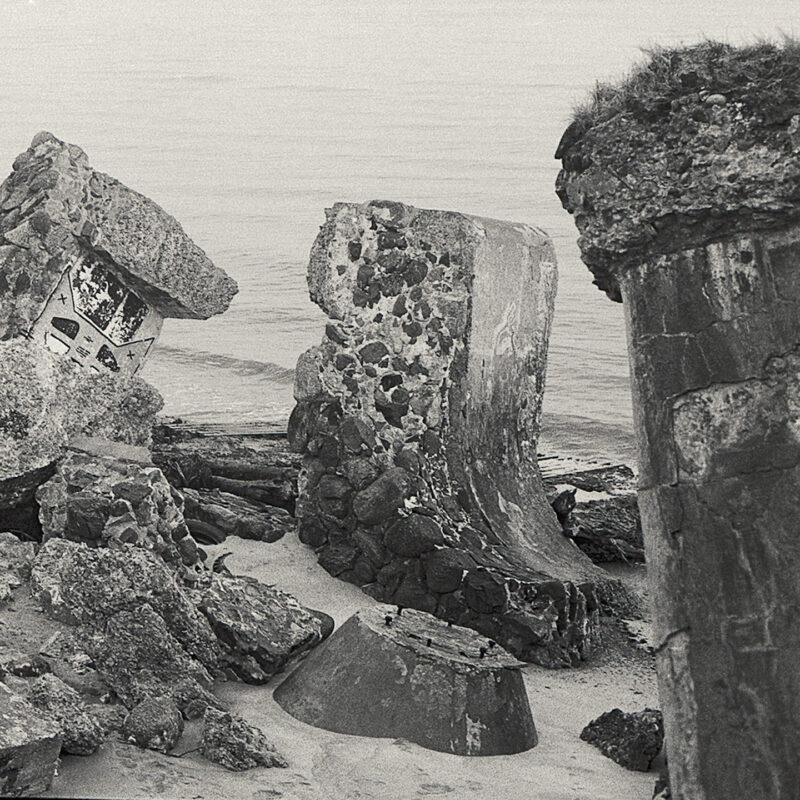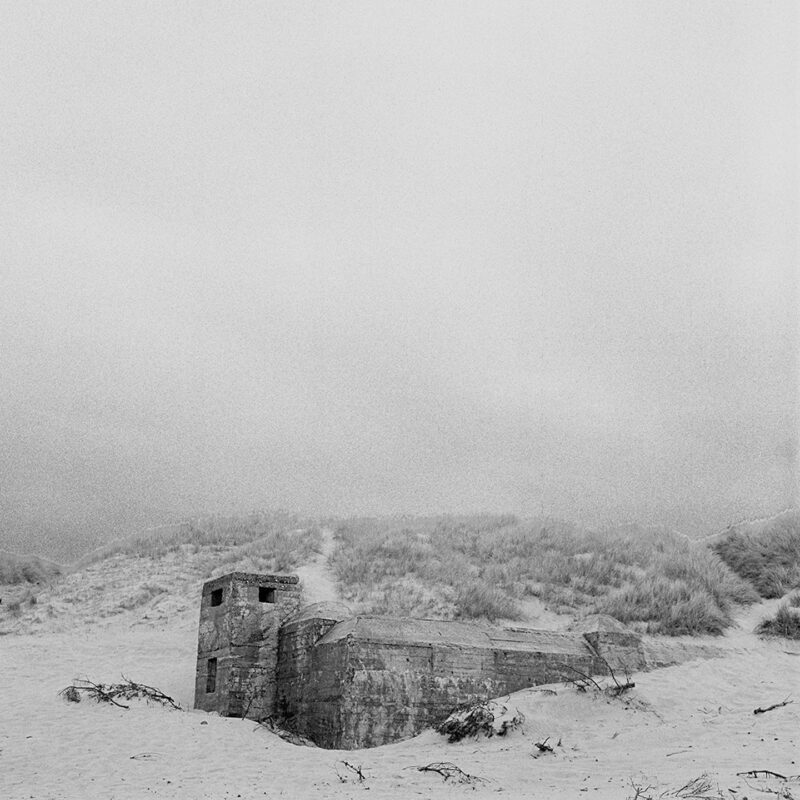I was en route to Leitrim for a second time in a month when ‘Zooropa,’ the U2 song from the album of the same name, came on the stereo (a consequence of Spotify’s predictive algorithm). I hadn’t heard the song in thirty years, the year the album came out and I was a student working in Bavaria for a long hot summer. Suddenly, I was back in the apartment room in Straubing, listening and thinking about the Europeanisation of U2 that had come on the back of Achtung Baby and now Zooropa. The previous summer I worked on an old Soviet style pig farm about a hundred kilometres from Berlin. As U2 hung old Trabants from the stage, I considered driving home to start university in one of these relics of the old world: the former Soviet Bloc that bewitched my younger self. The two U2 albums shouldered my journey into Old Europe, experiencing the stark contrast between the former DDR and the richer region of the Bavarian West.
It was only as I set out for Leitrim the second time and the song played that I thought of its significance as a harbinger of the future: the lurch into Capitalist Realism and the End of History. Zooropa is steeped in contradiction as a song, marking the creative energy that pulsated across Europe at the time and the strange perpetual present that would define the new age. ‘No particular place names, no particular song,’ Bono sings, an incendiary criticism of the new Europe’s neoliberal squashing of tradition and place.
Before this Bono implores us to ‘skip the underground…go to the overground’ in a raucous anthemic lament predictive of the exploitation and extortion of the underground music scene in the decades to come. Perhaps it is this very exploitation that led Mark Fisher to coin the term Capitalist Realism in his book of the same name in the first place (ironically, Bono has been at the forefront in legitimising neoliberalism as a social and economic force).
Fisher defines capitalist realism as the ‘widespread sense that not only is capitalism the only viable political and economic system, but also that it is now impossible even to imagine a coherent alternative to it.’ This contractual entrenchment in a singular ideology brings with a fatigue culture. In response to a lengthy quotation from The Communist Manifesto, Fisher would offer the retort ‘capitalism is what is left when beliefs have collapsed at the level of ritual or symbolic elaboration, and all that is left is the consumer-spectator, trudging through the ruins and the relics.’
For Fisher, who took his life in 2017, neoliberal consumerism is defined by an orgy of the recycled without the commitment that defines the properly political. We watch The Truman Show, all the while laughing at the naivety and innocence, unaware that the media is owned by similarly large corporations, and much of the news curated for the masses.
It is not that, therefore, that we skip the underground, as Zooropa suggests. We move up to an overground feeding on an ever-dwindling underground that becomes a proxy for it. Most of today’s ‘alt’ music would not sound out of place in the 1990s. Ruins, relics are everywhere, fodder for commodity production, without ritual and symbolic currency.

Image: Darn Thorn
Monumental Failure
It is perhaps for this reason the Sligo-born artist Darn Thorn’s solo exhibition Monumental Failure at Leitrim Sculpture Centre, my second reason for travelling to Leitrim in the space of a month, leaves such a mark, the photographic document resistance to the consumer-spectator fix. Thorn’s show consists of old and new work, the main body of which is a video projected slide show containing haunting photographs of the destroyed bunkers along Europe’s northern coastline.
High in the hills of Leitrim, a reservoir of natural colour and landscape, is the Centre itself. As one drives into New Line, Manorhamilton, in my case on a sunny summer evening, the blue and white colours of the centre are a dalliance with sun-soaked hills that lie all around. Thorn seems aware of this, given the curation of the show and the placement of work within the labyrinth spaces of the gallery.
On entering the space, itself, a series of older framed photographic works, two of which are in colour – all directly or indirectly concerned with the process of ruination as it transforms natural and manmade habitats – are hung. The two works in colour, titled Unknown Zone #8 and Unknown Zone #10 respectively, are images that seem to hang some way between the ‘beautiful’ and ‘sublime’ as landscape erupts in a sea of colour, and the ‘index’ is less a known quantity in comparison to the black and white images. These are sumptuous, and often mystifying photographs that seduce the senses in a far different capacity to drier, more contemplative and ‘index’ directed black and white photos.
Produced over a decade, and part of prior exhibitions in Thorn’s catalogue of work, the prints in the first space are primers for the meat of the exhibition projected by video in the main gallery space. In the first area black and white photographs produced between 2010 and 2016 are hung, one of which is ‘Oakhampton Castle in Ruins (after Turner).’ This is a giclee print, aligning photographic process with present day content, both of which the viewer is invited to connect in one. Thorn’s use of technical equipment is important, part of a broader aim to make time palatable as a process that exists as a continuum. Working against the desire to simply appropriate and recycle the past in objects of rebuilt ‘time’, a mainstay of capitalist realism, one finds here a measured engagement with the history of art via a ruined building that carries through Turner’s career as artist, used to define a graduating romantic sensibility.
Thorn is obviously familiar with the romantic preoccupation with ruins. His stark black and white rendering of the great castle (in its (post-)modern iteration) is that of an object to be approached cautiously. It is a kind of wry commentary on the genius of Turner in rendering landscape both ‘beautiful and ‘sublime.’ It is also, in this regard, something of an austere commentary on the site of exhibition: deep in the West of Ireland, the Leitrim hills. How do we make sense of this landscape? In the post-Covid, climate change era, is it even possible to look at landscape as anything other than commodity? Because, in my estimation, Thorn can do beautiful and sublime if that is what is needed. But his concern with landscape as a genre of art is to help connect with the past in a way that is primal and other to that of commodity culture.

Image: Darn Thorn
Perfect Location
Perhaps this is why Leitrim, with its traces of an older, less atomised Ireland, is the perfect location for this exhibition. Ruins lie everywhere, in the built environment or the landscape, as the Old and New Ireland face off against one another. It is difficult not to think of the coastline near Manorhamilton on entering the exhibition space and confronting the mainstay of Monumental Failure: austere analogue and monochrome images of the destroyed bunkers that litter Europe’s beaches like ghosts in the machine.
As mentioned in the short text accompanying the exhibition, French architect and theorist Paul Virilio began a career documenting these bunkers in the 70s, traces of an historical war machine that had become spatial and unmoored from time: bombs could fall at any moment, in night or day. Virilio, like Thorn, approaches the bunkers as monuments to a regime of power, whether the Atlantic Wall Hitler dreamed of becoming a ruination to rival Greek Civilisation, or a nation’s resistance to the Soviet March towards a future that is dialectically driven by Progress itself.
The destroyed bunkers that Thorn fixates on in three separate series, whether in Denmark or Lativa, are upended, torn apart, existing as traces of totalitarianism to which Europe’s past is intrinsically bound. Unlike the real landscape around the Sculpture Centre, these often-melancholic images present regimes of power best understood as evil.
They can be read in an implicit socio-historical or moral context, an art historical context as periodic movements, or as primers for an imagination that has no context other than a subject reckoning with time. It is the latter position that implored me to respond to the austere force of the imagery. Maybe Ireland’s recent Covid past was a trigger, but the ruins seemed more than mere historical indexes of a long-lost history, depictions of time that preceded the critic and artist. The idea of retreating to a bunker and hiding away in hope that the war would pass spoke to me of the pandemic lockdowns, the society-wide shutdowns ordered in lockstep across Europe during the Covid 19 pandemic. By looking at Europe’s past Ireland’s past began to stare back at me.

Image: Daniele Idini.
The War on Covid
‘The War on Covid,’ as Michael Casey referenced it in a timely article, (as really a ‘war on people’) is not a glitch in the smooth functioning of the West, but the continuation of social atomisation that accelerated in the previous decade. As capitalist realism bears its ugly teeth, the masses emerge as the ultimate consumers in every facet of life. Stay in, shut up, consume. The lockdown is the bunker mentality of global capitalism, delivering ‘goods’ while ‘keeping you safe’ becomes the key mantra spluttering from the mouths of bureaucrats high on the capital involved in controlling movement of people in space.
Is it mere coincidence that Thorn completed the series titled Monumental Failure, presented in four parts (there is an architectural drawing for an Atlantic Wall bunker by the Lodt organisation projected onto the floor in addition to the photographs of ruins projected on screen) as lockdown ended and the war in the Ukraine usurped it as a media focus? The ruins depicted in these haunting, exquisite, ‘failures’ are symptoms of totalitarianism that persists in our wake. They are signifiers of a bunker mentality that atomises and reduces human beings to bodies in hiding.
A certain symmetry therefore exists in knowing that these images document the beaches of Europe as of today, comment on Europe’s historical war machine, and pay homage to the medium of photography as practiced at the time the bunkers were constructed. Thorn spent considerable time in Lativa, a country that was invaded by the Soviets and Nazis in quick succession, the ruins acting as monuments to liberation and signs of an imminent fascist return.
The complex history of the region, as one regime of power succumbs to another, becomes manifest as haunting blots on landscape, the ruins left uncared for like remains of alien life. Recently, I stumbled upon an online debate concerning the Memorial Museum at Auschwitz, that morally debated the transformation of the death camps into a visiting centre (we see the museum at the end of Jonathan Glazer’s The Zone of Interest) to remind us of genocidal horror. The thrust of the debate concerned the morality of memorialising something as horrific as the camps that killed so many. Why, the argument went, build a monument to genocide? As I drove home from Leitrim thinking of the ruined bunkers whose various parts lay scattered on the beaches of Europe, meticulously rendered in Thorn’s monochrome images, I thought of a bunker mentality born less of a credo to murder than to ‘keep us safe.’
If the Memorial Museum is intended to engender memory of an event, what, we might ask, is the purpose of the ruined bunkers? Once intended to hide away from terror, the bunkers soon became the object of terror. Would destroying the bunkers trigger a mass forgetting, or do the ruins simply invoke the credo that one person’s idea of safety is another’s idea of terror? If there’s an ethical purpose to Thorn’s Monumental Failure it is to help see both positions as one.
Feature Image: Image: Darn Thorn
Darn Thorn’s exhibition ‘Monumental Failures’ runs until June 22nd in the Leitrim Sculpture Centre.




